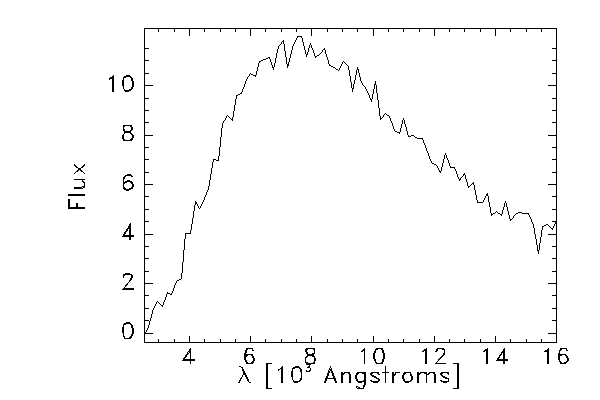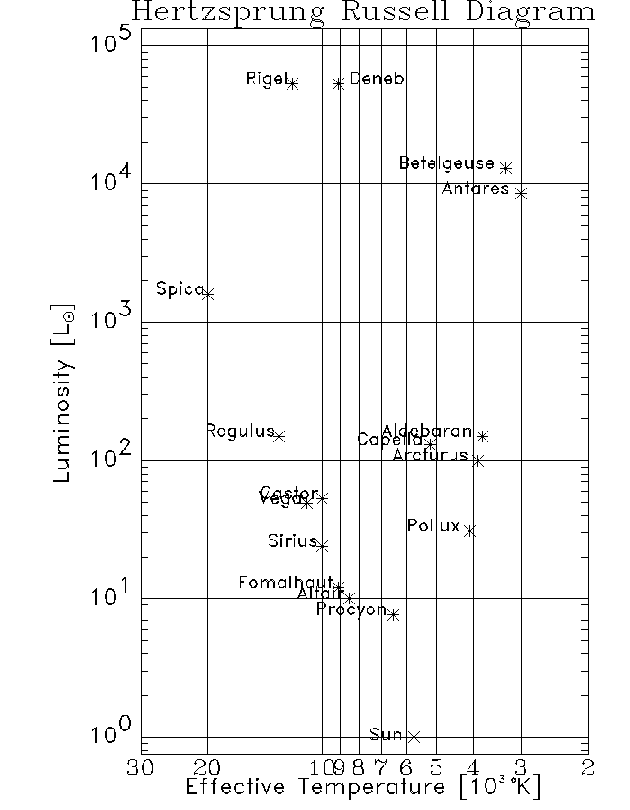
Homework 6: Stars
Due: Thursday, 13 March 1997 (at the beginning of class)
Name: ________________________
Student Number: ______________

We suggest the following approach to this problem:
2. (12 points) Parallaxlambda = 3x107 / T [K] Angstroms T [K] = 3x107 / lambda Angstroms = 3x107 / 7.5x103 Angstroms = 4x103 K = 4000 K This is much cooler than the Sun's temperature of 5750 K, as one would expect for a red giant like Arcturus.
Look in appendix E "Stars Nearer than 4 Parsecs" for the star closest
to the Sun. How does the distance to "gamma ISP" compare to this
star?
Which stars, from your list of 16 brightest northern hemisphere stars, are closer to the Sun than 4 parsecs?
3. (16 pts) Hertzsprung-Russell (HR) Diagram
On the Hertzsprung-Russell (HR) diagram below plot points representing
the Luminosity and Surface Temperature of the 16
brightest stars in the Northern Hemisphere from your list. The values
of the luminosity [in units of the Sun's luminosity (LSun)]
and the surface temperature for each star are given on your list.
Label each star with its name.

4. (5 pts) Using the HR Diagram you just constructed, the largest of the followi ng stars is:
5. (5 pts) Fomalhaut and Deneb emit the same amount of radiation from each square meter of their surface, but Deneb is more than 1000 times more luminous than Fomalhaut. The reason is:
6. (16 pts) Classifying Stellar Spectra
Do Discovery 14-1 from pages 313-315 in your textbook. That is,
classify the spectral types for the 8 stars in figure 14-1-1, using the
comparison spectra in figure 14-2, and fill in the types in the table
below. [Do NOT do discovery inquiries 14-1a and 14-1b.]
STAR SPECTRAL TYPE eta Dra G8 alpha Lyr (Vega) A0 beta Cas (Caph) F2 alpha Aur (Capella) G8 alpha Sco (Antares) M1 alpha Per (Mirfak) F5 epsilon Per B1 gamma Boo A5 Notice how the hydrogen and calcium lines compare to each other as the stellar temperature changes. (You do not need to memorize the temperature correspondence to the letters.)